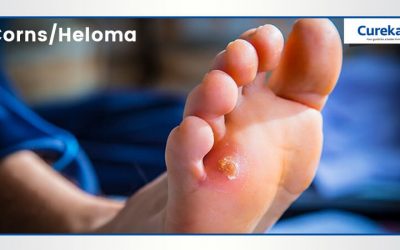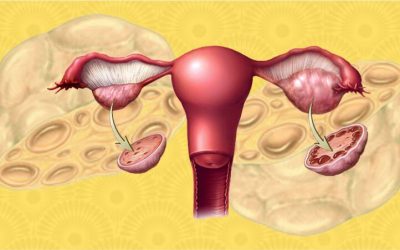The Hidden Dangers of Ignoring Corns and Calluses on Your Feet
Introduction
Ever stepped out of bed and winced in pain from a rough patch of skin on your foot? What seemed like a harmless callus may actually be a warning sign you shouldn’t ignore. While they may seem harmless, untreated corns on feet and calluses can lead to painful complications. What starts as mild discomfort can develop into severe foot issues if left untreated. Imagine feeling sharp pain with each step or struggling to wear your favorite shoes comfortably; these are just some risks you face by ignoring those hardened skin patches. Read on to know the risks of ignoring these common foot problems and let us see how to manage them effectively.
What are Corns and Calluses?
Calluses are thickened layers of skin that form in response to repeated friction or pressure. They typically appear on the soles of your feet, especially around the heels and balls of the feet. Corns on feet, on the other hand, are smaller, often round, and can be painful when pressed. They commonly develop on toes or areas prone to pressure from shoes.
Both conditions are your body’s way of protecting your skin, but without proper care, they can worsen over time.
Causes of Corns and Calluses
Several factors contribute to the development of calluses and corns on feet:
- Tight or Ill-Fitting Shoes: Shoes that pinch or squeeze your toes create friction, increasing the risk of calluses.
- High Heels: These shoes shift weight onto the ball of the foot, encouraging calluses.
- Barefoot Walking: Walking without footwear exposes your feet to rough surfaces, promoting hard skin formation.
- Certain Foot Shapes: Bunions, hammertoes, or bony protrusions increase pressure points that lead to corns on feet.
- Frequent Pressure and Friction: Athletes, hikers, and individuals working in active professions are prone to developing calluses.
Common Myths and Facts About Corns and Calluses
Myth 1: Calluses only affect older people.
Fact: People of all ages can develop calluses, especially those who spend long hours on their feet, wear tight shoes, or engage in activities like running or hiking.
Myth 2: Soaking your feet alone can remove calluses.
Fact: While soaking softens the skin, combining it with a proper foot callus remover is essential to break down the hardened layers effectively.
Myth 3: Calluses are harmless and don’t require treatment.
Fact: Ignoring calluses can lead to painful cracks, infection, and reduced mobility. Effective foot callus treatment is vital to prevent complications.
Myth 4: Cutting off calluses at home is safe.
Fact: Using sharp objects to remove calluses or corns on feet can increase the risk of injury and infection. Instead, opt for safe methods like a trusted callus remover or visit a professional podiatrist.
Proactive Care for Corns and Calluses
Caring for your feet consistently can prevent corns on feet and calluses from worsening. Here are some steps to follow:
- Moisturize Daily: Keeping your feet hydrated prevents skin from thickening excessively.
- Exfoliate Weekly: Using a foot callus remover or pumice stone helps remove dead skin buildup.
- Choose Supportive Footwear: Shoes with adequate cushioning reduce friction and pressure points.
- Protect Sensitive Areas: Using silicone rings, corn pads, or protective cushions minimizes pressure on vulnerable spots.
Hidden Dangers of Ignoring Corns and Calluses
Neglecting corns on feet and calluses can result in serious foot problems:
- Pain and Discomfort: Hardened skin layers can cause sharp pain when walking or standing.
- Infections: Cracked or damaged calluses create entry points for bacteria, increasing the risk of infection.
- Ulcers and Open Wounds: Individuals with diabetes, peripheral neuropathy, or poor circulation are especially vulnerable to developing foot ulcers. In severe cases, these may lead to complications requiring medical intervention.
- Posture and Mobility Issues: Severe calluses may alter your walking pattern, potentially leading to joint or back pain.
Effective Foot Callus Treatment Options
The good news is that there are various safe and effective solutions to manage calluses and corns on feet:
- Foot Callus Remover Tools: Pumice stones, foot files, and electric shavers are effective options for reducing hardened skin.
- Medicated Creams with Keratolytic Agents: Salicylic acid and urea-based creams soften calluses, making them easier to remove.
- Exfoliating Socks: These chemical peel socks gently shed dead skin over several days.
- Professional Treatment: For stubborn corns on feet, podiatrists may recommend cryotherapy or surgical removal.
Reducing Pressure and Friction with Special Products
In addition to treatments, preventive measures like silicone rings, cushioned insoles, orthopedic footwear, and specialized products like moisturizing creams and gel socks can significantly reduce pressure on your feet.
- Silicone Rings: These soft, flexible rings cushion sensitive toe areas, preventing corns on feet from worsening.
- Cushioned Insoles: Designed to absorb shock, insoles reduce pressure points, making them ideal for individuals who stand or walk for extended periods.
- Orthopedic Footwear: Special shoes with enhanced arch support and padded soles minimize friction and pressure, providing long-term protection against calluses and corns.
- Moisturizing Creams and Gel Socks: Creams containing urea or salicylic acid soften hard skin, while gel socks provide deep hydration, especially when worn overnight, improving skin texture and preventing calluses.
Best Practices to Remove Corns on Feet Overnight
If you’re looking for quick relief, try these effective methods to remove corns on feet overnight:
- Soak Your Feet: A warm foot soak with Epsom salt softens tough skin.
- Apply a Salicylic Acid Pad: These medicated pads break down hardened layers overnight.
- Moisturize Intensely: Thick moisturizers or petroleum jelly can deeply hydrate rough skin, aiding in faster recovery.
- Wear Moisture-Locking Socks: These socks enhance the effect of moisturizing creams and promote skin repair overnight.
Conclusion
Ignoring calluses and corns on feet may seem harmless, but they can lead to serious discomfort and complications. By using the right foot callus remover, adopting proper foot care practices, and taking preventive measures, you can maintain healthy, pain-free feet. Don’t wait until discomfort turns into a bigger problem, explore our range of callus removers, moisturizing creams, and gel socks to start your foot callus treatment routine today and step forward with confidence.
References:
- The effects of the use of customized silicone digital orthoses on pre-ulcerative lesions and plantar pressure during walking in people with diabetic neuropathy: A study protocol for a randomized controlled trial – 2023 Dec – https://pmc.ncbi.nlm.nih.gov/articles/PMC10806755/
- Plantar pressures are higher under callused regions of the foot in older people – 2007 Jul – https://pubmed.ncbi.nlm.nih.gov/17425648/
- The effectiveness of salicylic acid plasters compared with ‘usual’ scalpel debridement of corns: a randomised controlled trial – 2013 Sep – https://pubmed.ncbi.nlm.nih.gov/24063387/
- Pathogenesis and Treatment of Callus in the Diabetic Foot – 2016 Dec – https://pubmed.ncbi.nlm.nih.gov/26054651/











